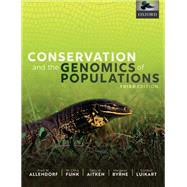The relentless loss of biodiversity is among the greatest problems facing the world today. The third edition of this established textbook provides an updated and comprehensive overview of the essential background, concepts, and tools required to understand how genetics can be used to conserve species, reduce threat of extinction, and manage species of ecological or commercial importance. This edition is thoroughly revised to reflect the major contribution of genomics to conservation of populations and species. It includes two new chapters: "Genetic Monitoring" and a final "Conservation Genetics in Practice" chapter that addresses the role of science and policy in conservation genetics.
New genomic techniques and statistical analyses are crucial tools for the conservation geneticist. This accessible and authoritative textbook provides an essential toolkit grounded in population genetics theory, coupled with basic and applied research examples from plants, animals, and microbes. The book examines genetic and phenotypic variation in natural populations, the principles and mechanisms of evolutionary change, evolutionary response to anthropogenic change, and applications in conservation and management.
Conservation and the Genomics of Populations helps demystify genetics and genomics for conservation practitioners and early career scientists, so that population genetic theory and new genomic data can help raise the bar in conserving biodiversity in the most critical 20 year period in the history of life on Earth. It is aimed at a global market of applied population geneticists, conservation practitioners, and natural resource managers working for wildlife and habitat management agencies. It will be of particular relevance and use to upper undergraduate and graduate students taking courses in conservation biology, conservation genetics, and wildlife management.








